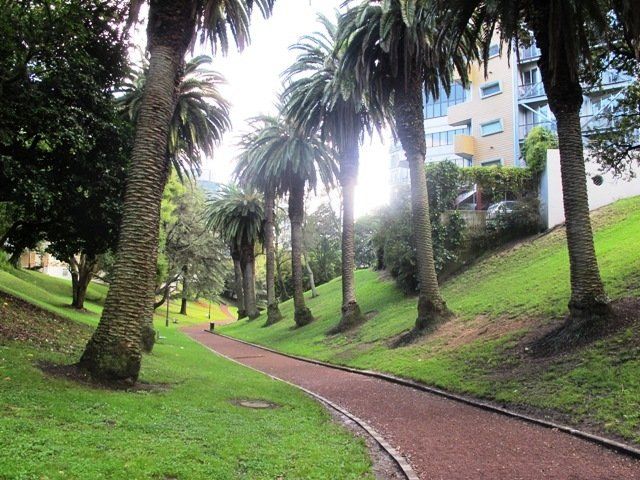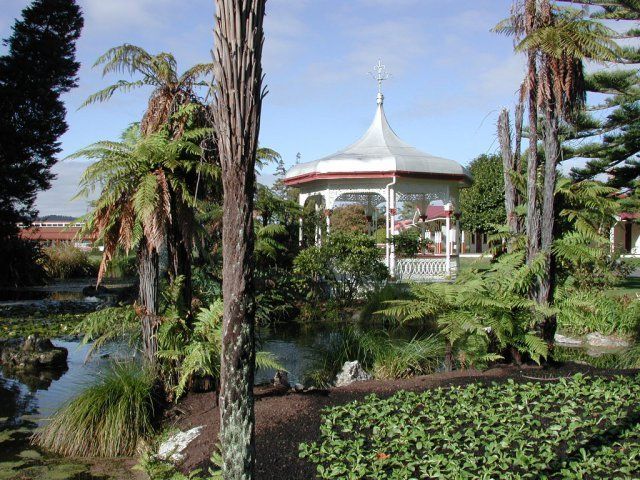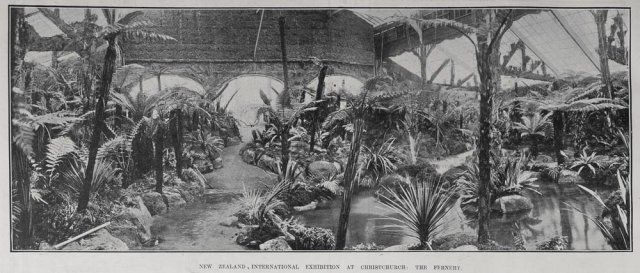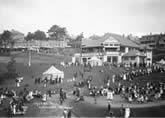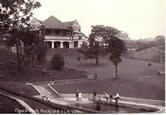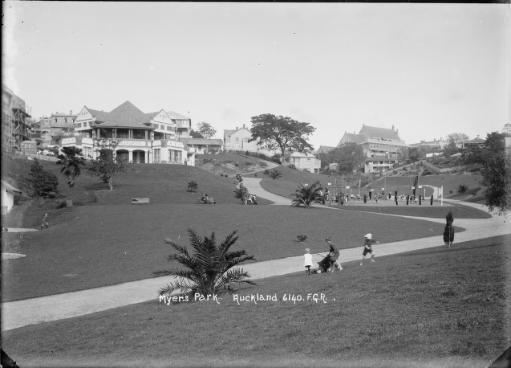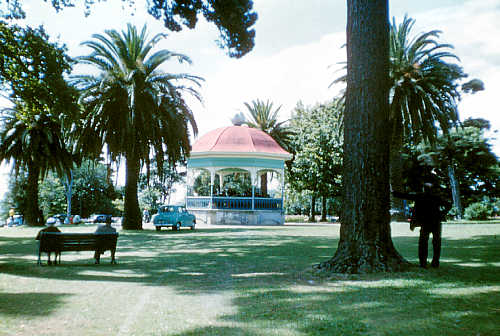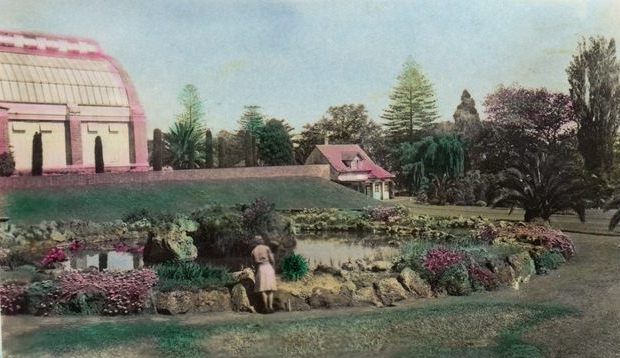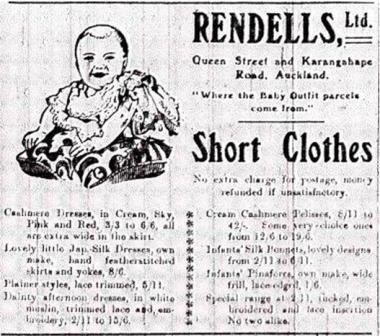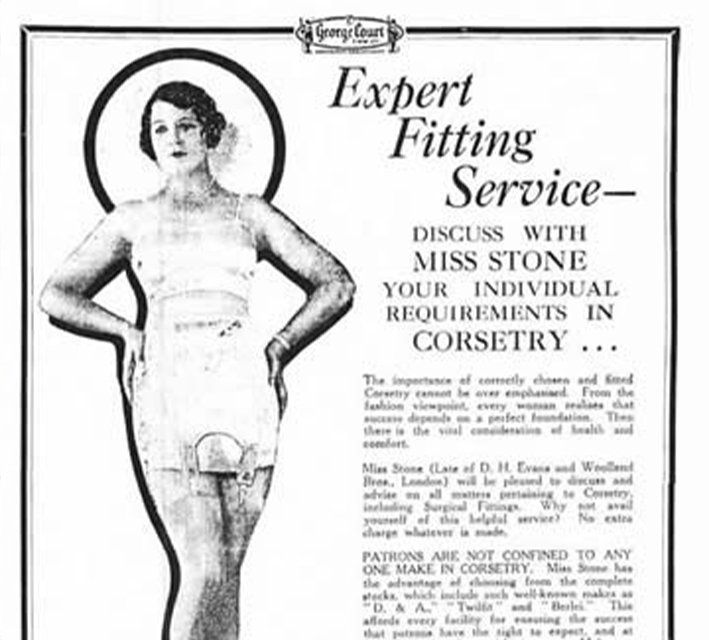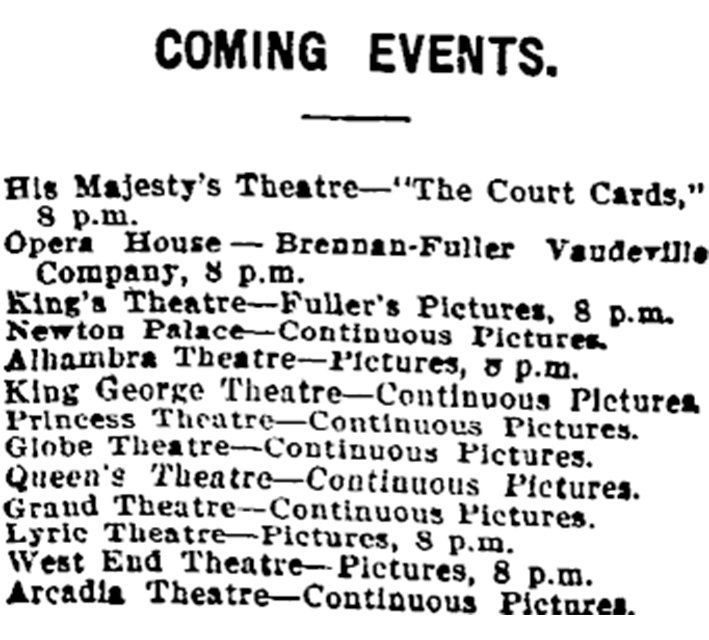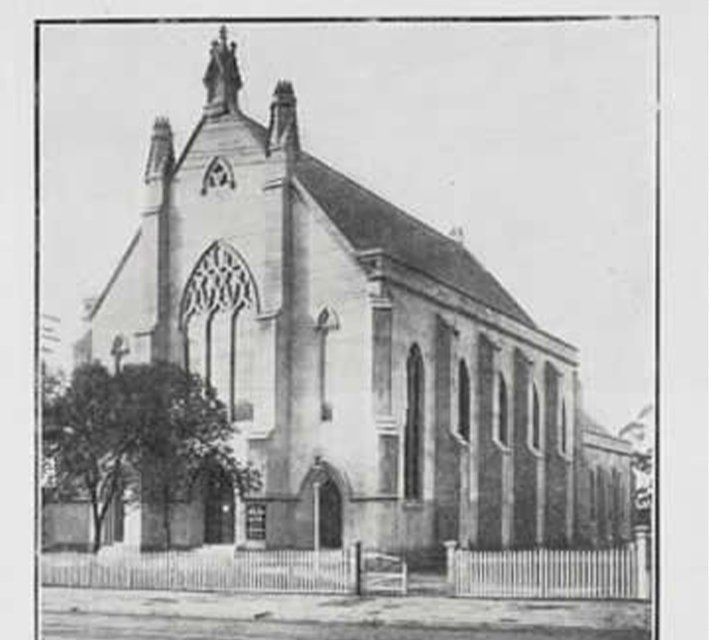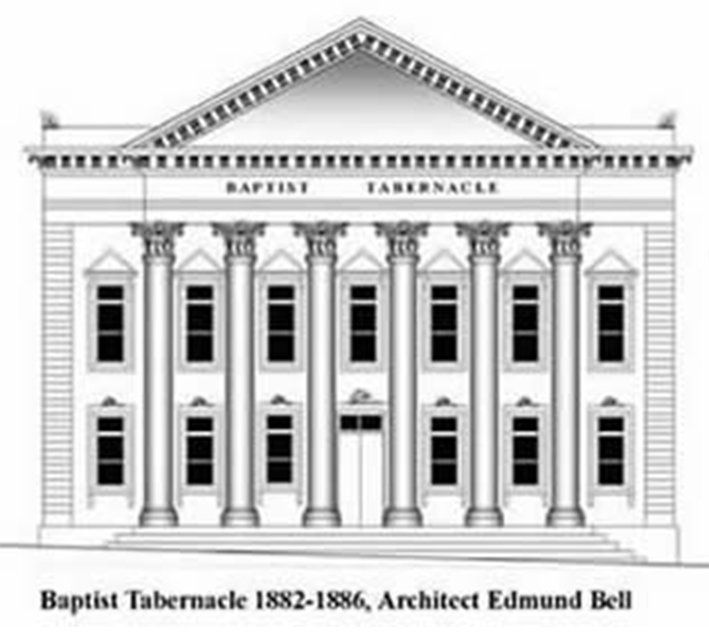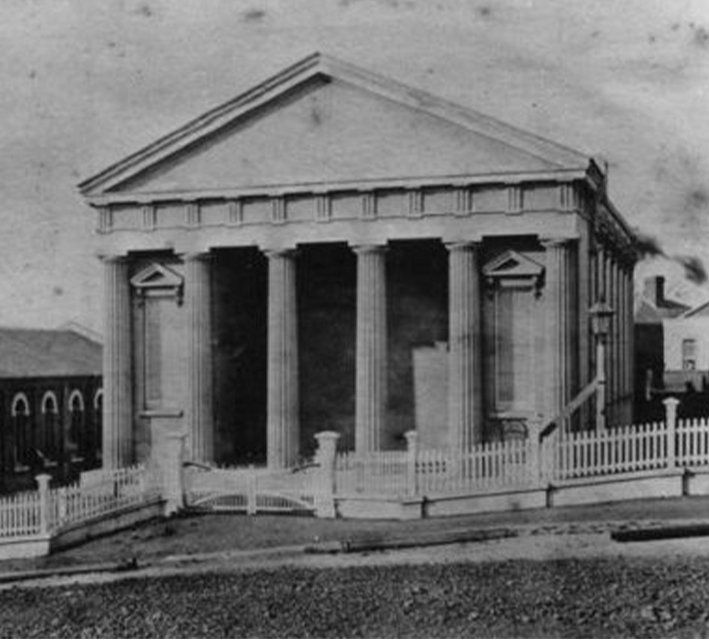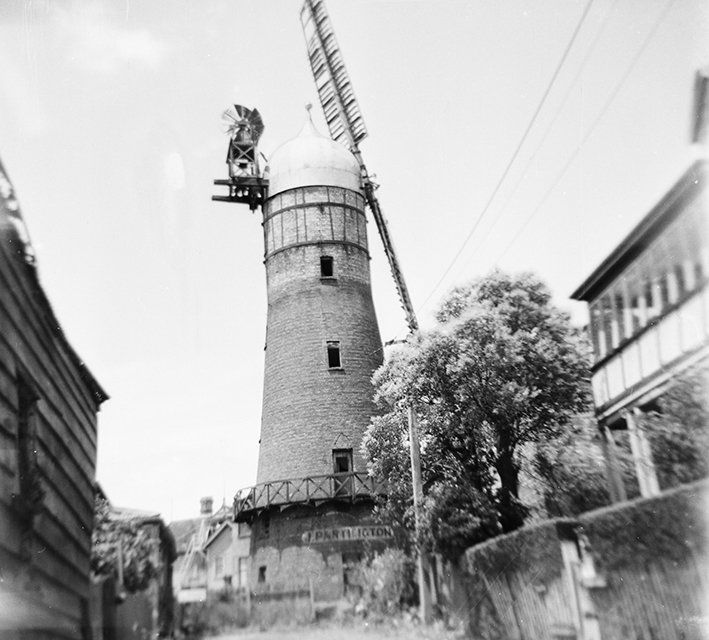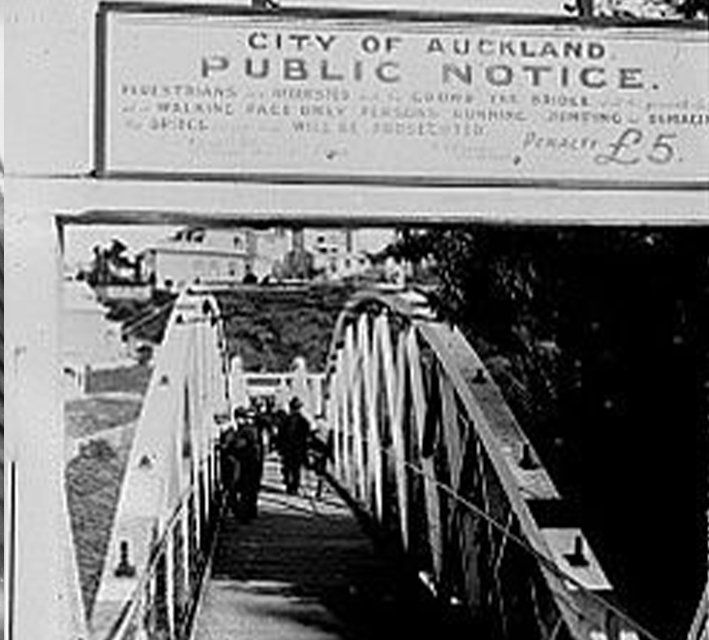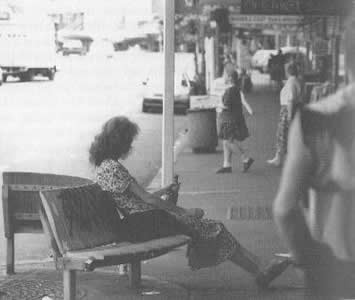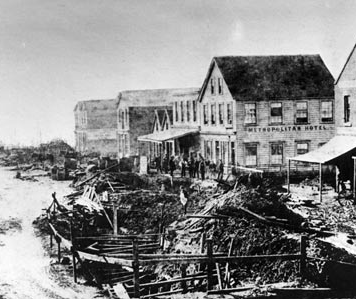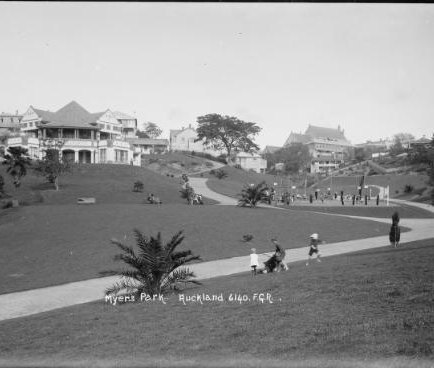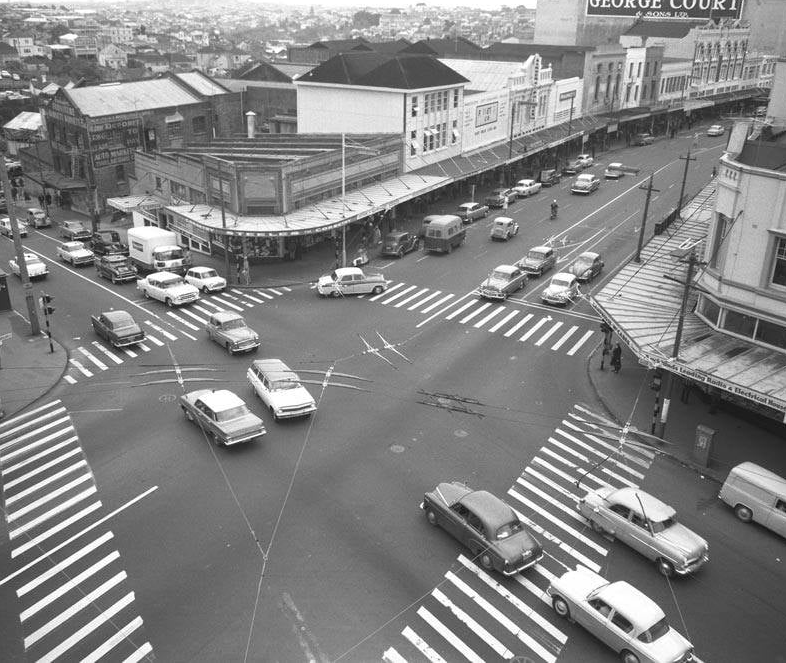Myers Park Designer
Thomas Edward Pearson F.R.H.S
1857-1930
Fellow of the Royal Horticultural Society
Avenue of Phoenix Palms in Myers Park
Pearson was born at Prestbury, Cheshire, England, where his father was a nurseryman and landscape gardener under Mr. John Shaw, of Shale, Cheshire.
After gaining experience at Philadelphia, America, for eighteen months Mr. Pearson returned to England.
At Lord Vernon's estate “Barrowfield," he had fifty men under his management. This probably for the 7th Baron Vernon, a prominant Liberal politican, although it may have been for his father, the 6th Baron Vernon.
Pearson was also engaged in laying out a country estate for Mr. William Turner, a large cotton manufacturer.
In 1885 Thomas Pearson went out to Tasmania under engagement to the State Government.
As foreman in charge of the Government Grounds at Hobart, he had twenty men under his supervision.
This landscape included the grounds of
Government House, the public
Queen's Domain, the Royal Tasmanian Botanical Gardens and the original location of the now closed
Hobart Zoo.
Subsequently he commenced work on his own account as a landscape gardener, while still being retained for Government work.
He returned to England in 1893, coming to New Zealand five years later to work for Mr. Robert Heaton Rhodes, of Canterbury.
Robert Heaton Rhodes (1861-1956) (later Sir Robert Heaton Rhodes) was a major landowner in Canterbury.
His 5,000 acre property at Otahuna had extensive gardens, created on a scale rarely seen in New Zealand before or since.
An artificial lake was constructed, and several acres were laid out in trees, lawns, avenues and flower beds, presided over by a 40 roomed house designed by Frederick Strouts (1834-1919).
Otahuna soon became a popular venue for the garden parties of Canterbury's social élite, and for polo matches, in which Rhodes was a keen and expert participant.
Rhodes was highly respected as a model farmer, and was president of the Canterbury Horticultural Society, the Canterbury Agricultural and Pastoral Association and the first president of the New Zealand Red Poll Cattle Breeders' Association.
The garden at Otahuna was noted for its lavish displays of prize winning daffodils - surplus bulbs were donated to the Christchurch Hospital and the Government Domain (later the Botanic Gardens), forming the nucleus of the daffodil beds which now line the Avon River.
In 1898 Pearson entered the employment of the New Zealand Government as Landscape Gardener in charge of the Rotorua Government Domain.
Government Gardens Rotorua
In 1901 he was appointed by the New Zealand Government as a Landscape Designer for the newly created Tourist and Health Department.
In this capacity he created landscaped parks for various Government Domains throughout the country which emphasised the unique natural beauty of the Dominion.
The design of the Rotorua Garden included natural and artifical mudpools and geysers..
The Government Gardens at Queenstown
Advances in technology meant it was easier to get to New Zealand in steam ships and the development of a national Railway system meant it was easier to get around the country and vist places of natural beauty.
There were increasing numbers of overseas tourists visiting New Zealand to view its natural scenery and the Government encouraged this by creating a Ministry to deal with Tourism.
Local residents were also encouraged to travel around the country and spend their vacation time at various locations - this resulted in a chain of government run hotels (the Tourist Hotel Corporation).
Most prominent amongst these locations were seaside towns such as Napier and the Spas at Te Aroha. Hamner, Queenstown and Rotorua.
New hotel facilities, places of amusement and ornamental pleasure grounds were created in these locations, either by local businesses, local government or the government itself.
The Fernery at the Christchurch Exhibition 1906.
Pearson's work included the Government Gardens at Rotorua, Te Aroha, Hamner and Queenstown where he created gardens which included the use of local materials (volcanic rock in particular) and native plants.
A clear example of this work was the fernery he designed for the Christchurch Exhibition in Hagley Park in 1906/1907.
This included large native Tree Ferns which had not, previously, been usually included in garden designs but which were now adopted as virtually a National Icon.
Above Opening Day in 1916 and below in 1917.
Auckland City Parks Superintendent
In 1908 he was appointed the Park Superintendent for Auckland City, a post he retained until his death in 1930.
Pearsons first big project for Auckland was the layout for the Auckland Exhibition in the Domain in 1913/14 which included landscaping the area around the Domain Ponds as a setting for the temporary buildings.
This was very similar to the work he had done at Christchurch; it included informal garden areas of contrasting styles; colourful Tropical plants, more monochrome New Zealand natives, colourful Asian ornamentals and european standards, such as rambling roses.
Auckland Domain Teahouse - the only permanent structure from the 1913 Exhibition - in the foreground is a rockery comprised of volcanic rock - this has survived but the rustic fence work has not.
After the temporary buildings were removed the gardens recieved other structures such as the complex of glas Wintergardens which are connected by a Wisteria covered pergola.
Adjacent to them is a fernery created in a disused quarry area - it, of course, contained a range of New Zealand Tree Ferns.
The period just before and after the First War saw the establishment of many new parks in Auckland.
Pearson's influence can be clearly seen in the main ones he oversaw: most important of these were Cornwall Park, Point Erin Park 1911, Parnell Park 1913, Myers Park 1915.
Auckland Domain - Pearson often used rustic wood fences but none have survived.
As well as the Domain he was also responsible for the additions to the other major 19th century parks in Auckland: Albert Park and Western Park, where he introduced informal planting areas and rockeries to contrast with the older and more formal layouts.
He invariably introduced areas of "natural native" planting to evoke the wonders of the local scenery; creating living postcards or dioramas for people to wander through - these included the now ubiquitous Tree Ferns, flax and Cabbage Trees.
Myers Park around 1920 - in the foreground is a newly planted Phoenix Palm
Part of the reason he was keen on native New Zealand plants was that appeared rather tropical.
Wherever possible he used actual tropical plants or hardy specimens which evoked warmer climates - this included many flowering shrubs such as Hibiscus, Camellia and Azalea.
A prominent feature of his work was the constant use of several varieties palm trees. The great Phoenix Palms are almost regarded as his trademark.
Phoenix Palms in the Auckland Domain: the Bandstand and trees date from the 1913 Exhibition.
He is noted for the lavish use of volcanic basalt stone - often in the form of terraces, walls, benches, entrance archways but also as informal rockeries and great specimen boulders.
Pearson used this material in many of the parks he designed in Auckland most notably at Parnell, Cornwall Park, Marivare Reserve, Ellen Meville Park, the Auckland Zoological Gardens at Western Springs and, of course, Myers Park.
Avenue of Phoenix Palms in Myers Park (image missing)
The same features appear in public and private gardens through out Auckland and the North Island, possibly due to his influence and derived from Australian and Californian examples.
This "Pacific Rivera" style has largely formed the background to the lives of many New Zealanders especially in seaside settings (such as Mission Bay & Tamaki Drive for example).
Many of these rock feature survive in various parks from this period although budget and maintainence issues since the 1930s has meant a number of them have been removed or altered.
Auckland Zoological Gardens - Volcanic rock was used to make naturalistic animal enclosures. The general planting scheme was typical of Pearson's enthusiasm for colouful tropical plants.
Pearson died in 1930 in the residence provided for him by the City Council; the Victorian Gardeners Cottage in Albert Park. He was 73 at the time of his death and was survived by his wife.
Pearson Rockery border in the Auckland Domain.
Historical landmarks of Karangahape Road...
Subscribe to the
Karangahape Road newsletter...
NEWSLETTER
Thank you for signing up for our newsletters.
Please try again later.
Karangahape Road Business Association © All Rights Reserved 2020
Made by Monster Valley & This Needs Doing
AUCKLAND TRANSPORT JOURNEY PLANNER:
Find out your best route to Karangahape Road by bus, ferry or train.



